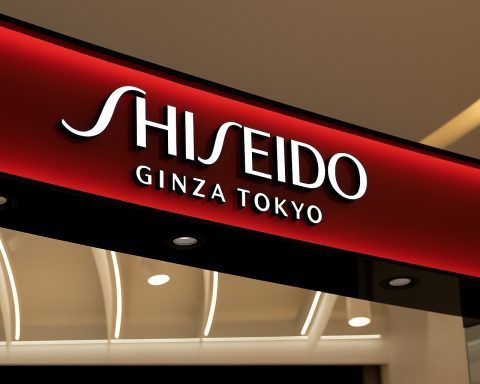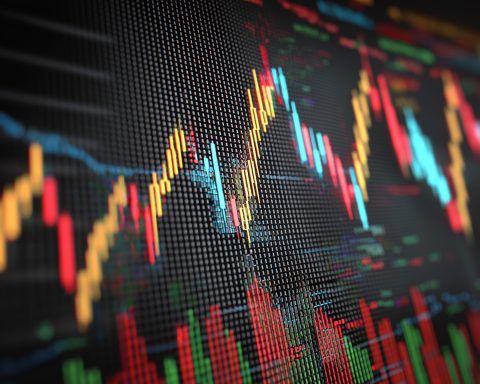Published: November 10, 2025
Key points
- Sharp raised full‑year profit guidance after a strong April–September half, citing stronger PC demand; H1 net profit almost doubled year on year. [1]
- Nikkei 225 rebounded +1.26% to 50,911.76, led by semiconductor and platform heavyweights. [2]
- Bank of Japan policymakers see a growing case to raise rates in the near term, according to the October meeting’s summary of opinions released today. [3]
- Policy front: A draft of PM Sanae Takaichi’s stimulus prioritizes pro‑growth measures and investment incentives; reporting points to targeted tax breaks across 17 strategic industries, with details expected Nov. 21. [4]
Sharp jumps on PC upgrade cycle and raises FY26/03 outlook
Electronics maker Sharp (6753) lifted guidance for the year ending March 2026 after a markedly stronger first half. April–September ordinary profit surged to roughly ¥33.6 billion (about 23× year‑on‑year), while net profit climbed to about ¥45.5 billion (+98% YoY). On the back of that performance, Sharp raised its full‑year forecasts to operating/ordinary profit ¥45 billion and net profit ¥53 billion (from ¥30 billion, ¥27 billion and ¥32 billion previously), while keeping revenue at ¥1.87 trillion. The company also kept the interim dividend suspended. [5]
Management flagged outperformance in the PC business during Q2, prompting the upgrade—consistent with the broader, end‑of‑support Windows 10 refresh that has pulled forward enterprise and public‑sector purchases. Microsoft formally ended Windows 10 support on October 14, 2025, a milestone widely expected to drive replacement demand into FY2025–26. [6]
A separate wire report also notes that Sharp’s new net profit goal of ¥53 billion is above the latest analyst consensus compiled by LSEG’s I/B/E/S, underscoring the degree of upside versus expectations. [7]
Why it matters: Japan’s hardware supply chain (from components to ODMs) remains sensitive to PC refresh cycles. With AI‑capable notebooks entering the mix and a late‑cycle corporate refresh still unfolding, Sharp’s lift offers a read‑through to PC‑adjacent names and upstream parts suppliers into the March quarter. (For context, multiple industry trackers attribute the Q3 2025 upturn in global PC shipments to the Windows 10 “sunset.”) [8]
Market snapshot: Nikkei 225 rebounds; chip complex leads
After a volatile week, Japan’s Nikkei 225rose 1.26% to 50,911.76 at the close. Breadth improved on the Prime Market with advancers outpacing decliners. Advantest was the day’s biggest positive index contributor, followed by Tokyo Electron, SoftBank Group, and Fast Retailing; Recruit Holdings, Chugai Pharmaceutical, Nintendo, Honda, and Omron were among the top drags. [9]
Intraday, the market opened firmly higher amid a slightly softer yen and hopes for progress on the U.S. government shutdown, according to early‑session broadcast reports. [10]
Why it matters: With tech heavyweights doing the lifting, index performance remains tightly linked to the semiconductor cycle and AI infrastructure spending. Today’s move also unfolded against a shifting domestic macro backdrop (see BOJ and fiscal policy sections below), which will influence sector leadership into year‑end.
BOJ watch: Summary points to higher odds of a near‑term hike
The Bank of Japan’sOctober Summary of Opinions, released today, shows most board members see conditions aligning for a near‑term rate hike, emphasizing the need to sustain wage momentum and to ensure inflation stabilizes around target. The document suggests up to eight of the 13 policy opinions argued for tightening soon or set conditions for doing so. [11]
Why it matters: Markets have been toggling between growth optimism and rate‑sensitivity. A cautious, data‑dependent BOJ path—particularly if paired with growth‑oriented fiscal steps—could temper JGB volatility while keeping a floor under the yen, both key inputs for equities’ sector mix (exporters vs. domestic defensives).
Policy signals: Takaichi’s first big stimulus draft leans pro‑growth
A draft outline of Prime Minister Sanae Takaichi’s first economic stimulus indicates a tilt toward growth over strict near‑term fiscal consolidation, with an emphasis on stable prices, consumer relief from living‑cost pressures, and investment in crisis management and growth sectors. Reporting indicates potential tax incentives aimed at 17 strategic industries (AI, semiconductors, shipbuilding, aerospace, defense, and others). The government is preparing to unveil the package on Nov. 21, positioning it as the administration’s opening economic blueprint. [12]
In parallel, Takaichi has flagged a looser medium‑term fiscal target—shifting away from annual primary balance in favor of a multi‑year framework—while urging caution on BOJ rate hikes to avoid choking off the recovery. The policy mix points to continued government–BOJ coordination as Japan aims to sidestep a slip back into deflation. [13]
Why it matters: A stimulus that accelerates capex via tax credits and multi‑year funding could amplify private‑sector investment just as the PC/AI hardware cycle strengthens. That would be supportive for capital goods, select cyclicals, and parts of the digital infrastructure stack.
What to watch next
- Nov. 21: Formal details of the stimulus package—especially the scope of tax deductions for capex and the list of eligible industries. [14]
- BOJ communications ahead of the year‑end meeting cycle: Any updates on wage‑price dynamics or the inflation outlook that firm up the timing of a rate move. [15]
- Earnings follow‑through: Whether other PC‑exposed Japanese names echo Sharp’s tone as Windows 10‑related upgrades work through public‑ and private‑sector budgets. (Microsoft formally ended Windows 10 support on Oct. 14, a key catalyst for replacements.) [16]
Bottom line
On Nov. 10, 2025, Japan’s equity market staged a constructive rebound as Sharp’s upgraded outlook showcased how the Windows 10 refresh is bolstering PC‑linked earnings, while the BOJ signaled a careful but firmer path toward normalization and Tokyo moved closer to unveiling a pro‑investment stimulus. The interplay between these three forces—earnings, rates, and fiscal policy—will set the tone for Japan risk assets into the year’s final weeks. [17]
Sources used in this report include Kabutan (earnings and market close), Reuters (BOJ and fiscal policy), Yahoo Finance/Jiji (Sharp H1 results), and Microsoft (Windows 10 lifecycle), all accessed on Nov. 10, 2025. [18]
References
1. s.kabutan.jp, 2. kabutan.jp, 3. www.reuters.com, 4. www.reuters.com, 5. s.kabutan.jp, 6. kabutan.jp, 7. jp.reuters.com, 8. www.itpro.com, 9. kabutan.jp, 10. news.tv-asahi.co.jp, 11. www.reuters.com, 12. www.reuters.com, 13. www.reuters.com, 14. www.reuters.com, 15. www.reuters.com, 16. support.microsoft.com, 17. s.kabutan.jp, 18. s.kabutan.jp










